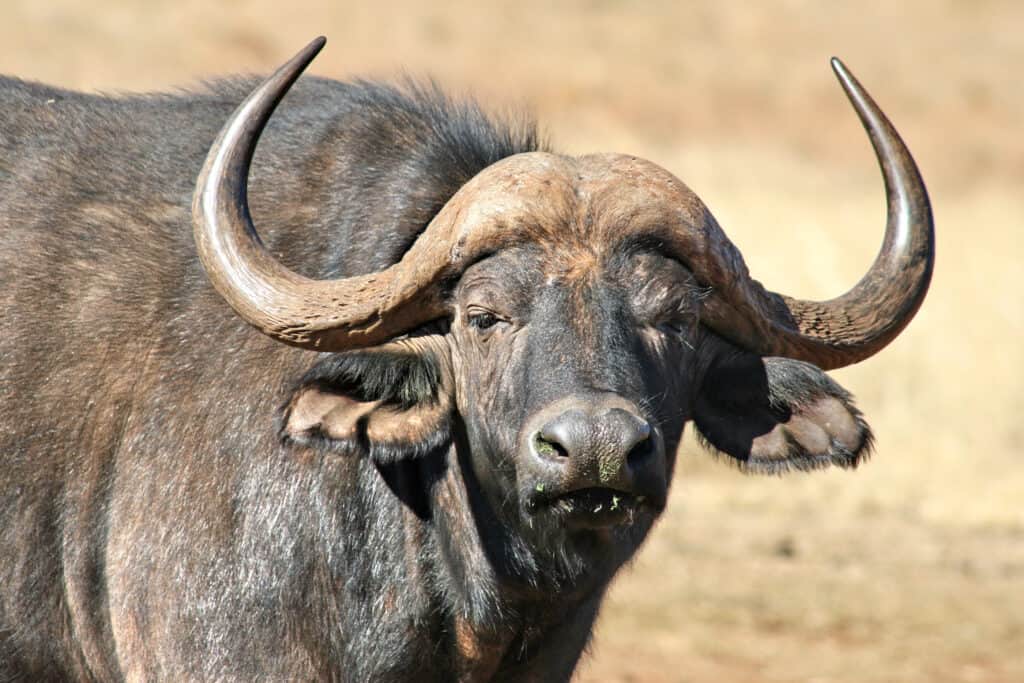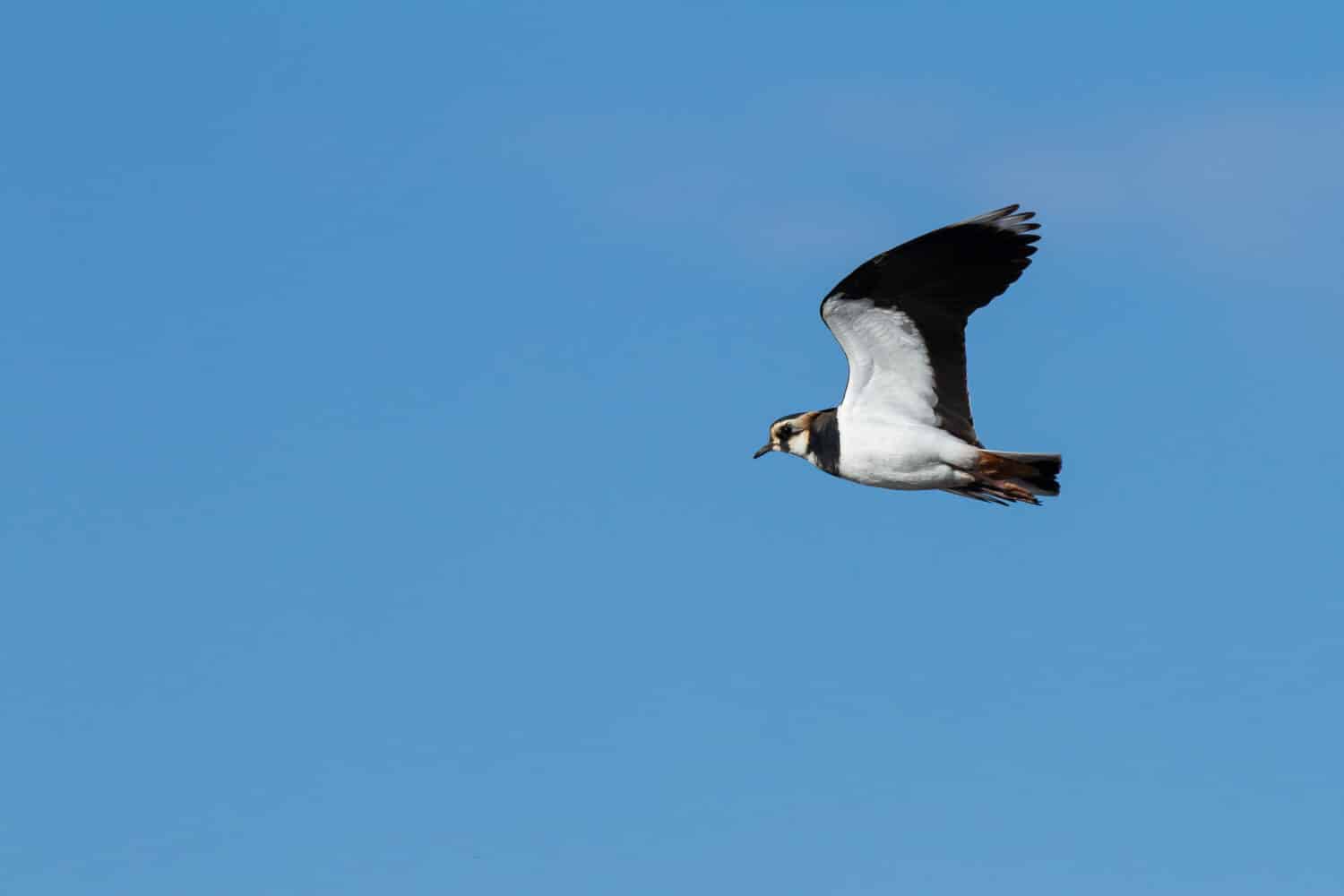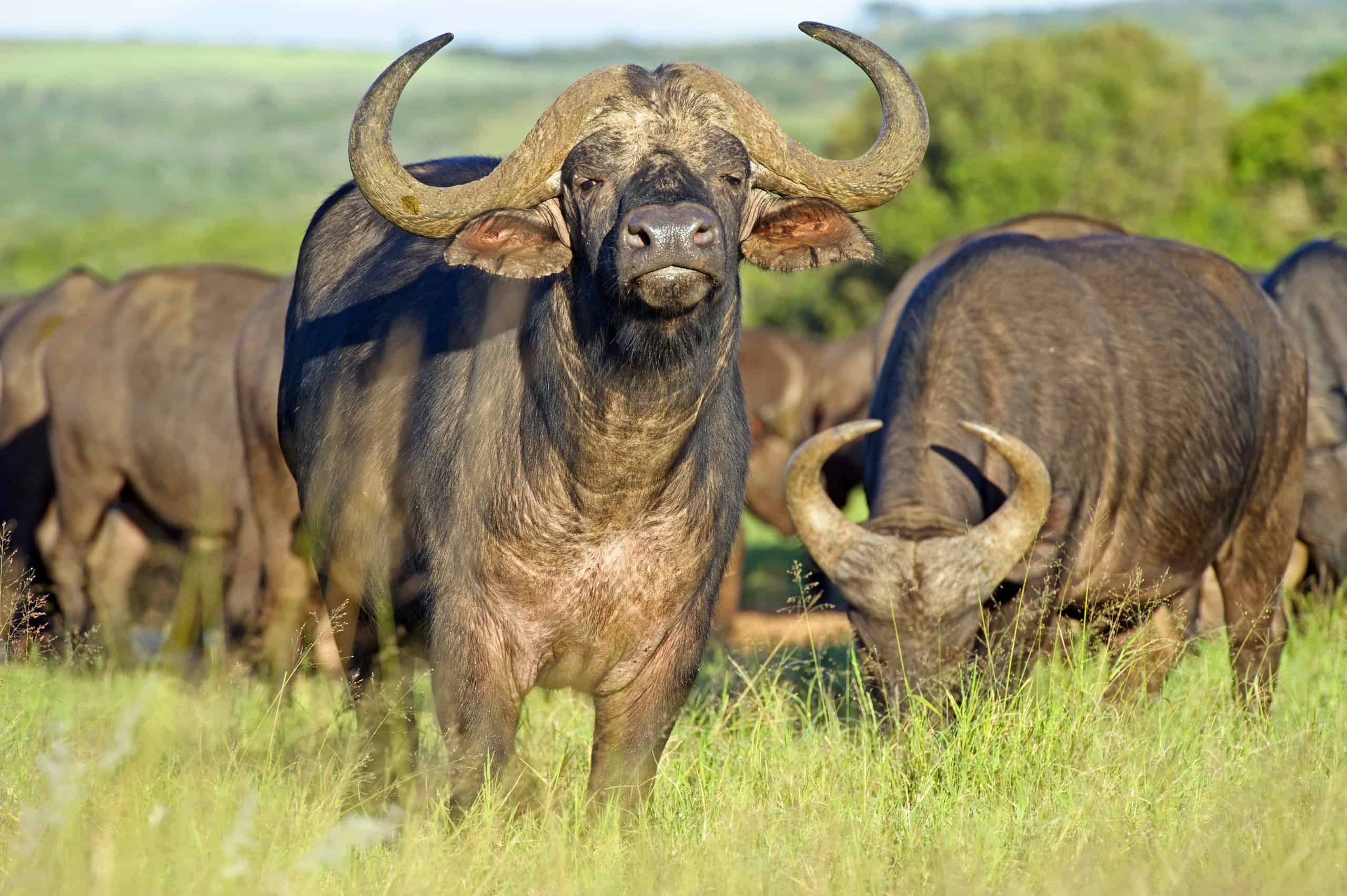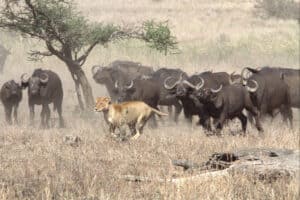Here at A to Z Animals, we have plenty of incredible content about Kruger National Park. The unending beauty of Africa may be found where nearly half a million acres of unparalleled biological diversity meet cultural and archaeological sites.
The famed Kruger National Park is home to some of the best wildlife in all of Africa. Although this area is most popular for the big five animals, today we’re going to be looking at two very different animals.
You Have to See This!
A video filmed at the park showcases a massive buffalo standing over two blacksmith lapwing birds. Looking at these two creatures, they couldn’t be more opposite. The towering buffalo may way up to 2,200 pounds!
The birds are squawking at the giant creature telling him to back off! They’re protecting their nest that’s on the edge of the watering hole. As these birds continue to yell, they can also be seen spreading their wings.
They do this to appear as large as possible. Although it doesn’t get them anywhere close to the size of the buffalo, that doesn’t stop them! In fact, at one moment, one of the birds ends up hitting the buffalo straight on its nose!
The birds keep protecting their nest as the buffalo stands his ground, simply wanting a drink. Eventually, the larger animal gets the picture and moves to another spot. This just shows how brave these birds truly are.

The Cape Buffalo of Africa is a massive animal.
©Hannes Thirion/Shutterstock.com
Parenthood of a Blacksmith Lapwing Bird
Blacksmith lapwings have a choice between being sedentary or migrating, depending on the amount of precipitation and the accessibility of food. Typically, they eat insects that are flying or crawling on the ground.
Lapwings can move their feet to draw prey to the water’s surface when feeding in shallow waters. Blacksmith lapwings develop lifelong mate relationships and are monogamous birds. Typically, they breed during springtime.

Northern lapwings are one of many species.
©Light and Vision/Shutterstock.com
They are lone nesters and grow extremely territorial throughout the breeding season. This type of bird constructs its nests in a safe location near water, typically behind a bush. Nests are little recesses in the soil or in grassy areas that have vegetation around them.
A female lays one to four eggs, which are then incubated for up to 33 days by the two parents. Although the young chicks can leave the nest in a matter of hours due to their precocity, for the first several weeks they always stay right next to their parents.
After around a month of staying by their parents’ side, they’re are independent and can start lives of their own!
Thank you for reading! Have some feedback for us? Contact the AZ Animals editorial team.








